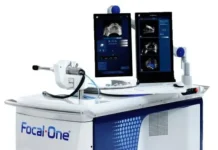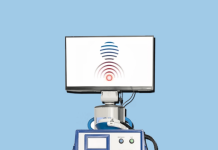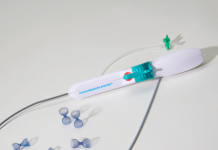With an estimated 40 million men in the U.S. living with benign prostatic hyperplasia, or BPH, Procept Biorobotics has developed a treatment device that certainly holds water.
Literally: The AquaBeam Robotic System uses a heat-free jet of water to treat the condition in a technique the company has dubbed Aquablation.
Procept’s plans to commercialize the AquaBeam system as a worldwide BPH treatment will soon become a reality, thanks to the close of an $85 million funding round. The series G financing was led by Fidelity Management & Research Company, with additional backing from T. Rowe Price Associates, CPMG, Perceptive Advisors, Viking Global Investors and Duquesne Family Office.
The California-based company will use the proceeds to scale up its commercialization efforts, according to Reza Zadno, Procept’s president and CEO.
“Aquablation’s combination of safety and efficacy provide millions of men dealing with the disease of BPH an option that addresses the tradeoffs that exist with current treatment options,” Zadno said. BPH occurs as the prostate gland enlarges with age. Though not linked to prostate cancer, it can cause difficulties with urination, infections, bladder stones and kidney problems.
With Procept’s system, surgeons use a disposable, single-use handpiece to insert the AquaBeam robotic device into the prostate, then use the built-in cystoscope and ultrasound imaging to identify the tissue to be removed. Once the treatment plan is set, the automated robot takes over, directing the high-velocity stream of water to remove only the identified tissue.
According to the company, the use of a water jet pulsating at nearly the speed of sound, rather than traditional heat-based methods, eliminates the risk of complications and side effects caused by thermal injury. Those side effects can include bleeding, incontinence, sexual dysfunction and more.
The AquaBeam robotic system has already gotten the go-ahead from the FDA. Upon being granted its de novo clearance in late 2017, the system became the first automated surgical robot cleared by the FDA to treat BPH.
Since then, Procept has further proven the safety and efficacy of its system in removing excess prostate tissue. Early results of a phase 3 trial presented in 2018 showed that its water-based ablation technology significantly improved patients’ urinary flow rates and overall BPH-related symptoms, and also resulted in very low rates of major bleeding events after the procedure.
Follow-up results of that study published last year proved that the AquaBeam’s technique remained safe and durable two years after treatment. At the 24-month mark, only two of the 101 study participants had undergone repeat procedures to treat their BPH, and nearly all of the participants reported sustained improvements in symptom relief as well as preserved continence and sexual function.
Hire with confidence






